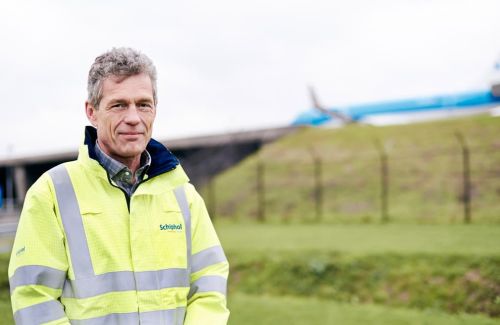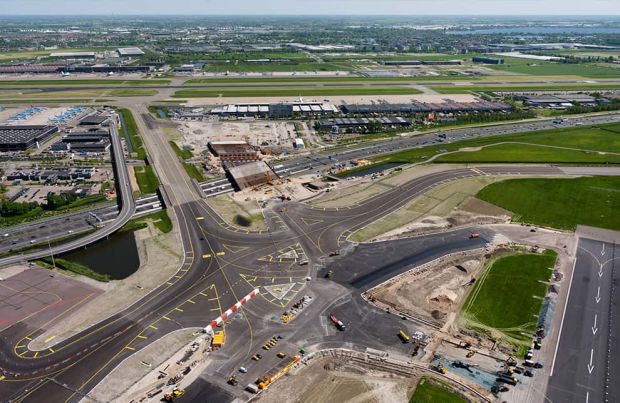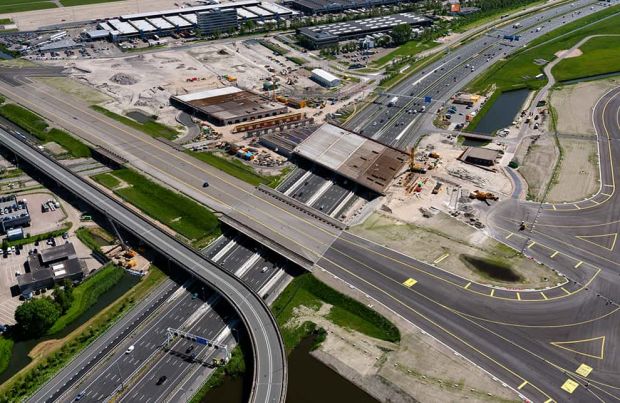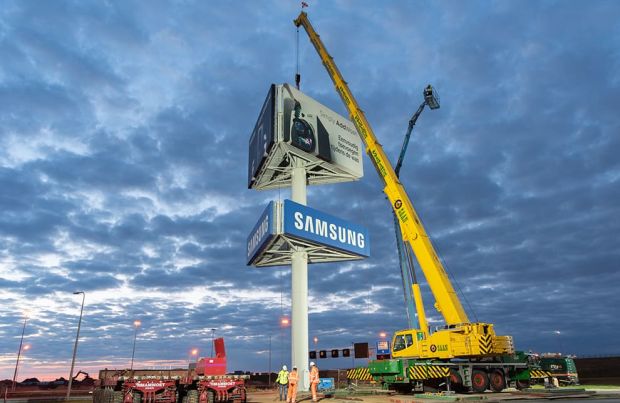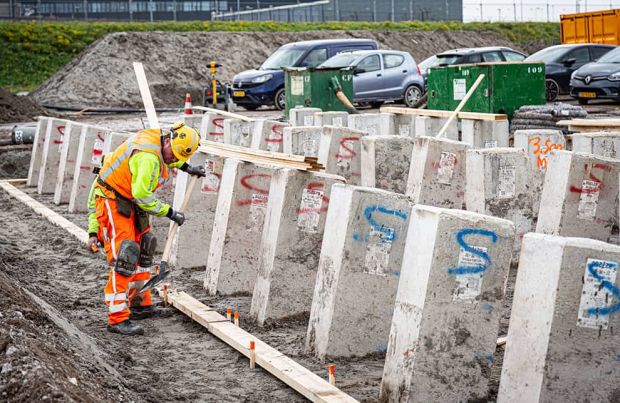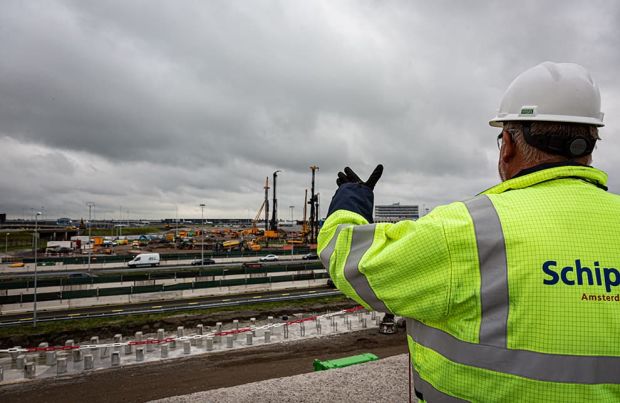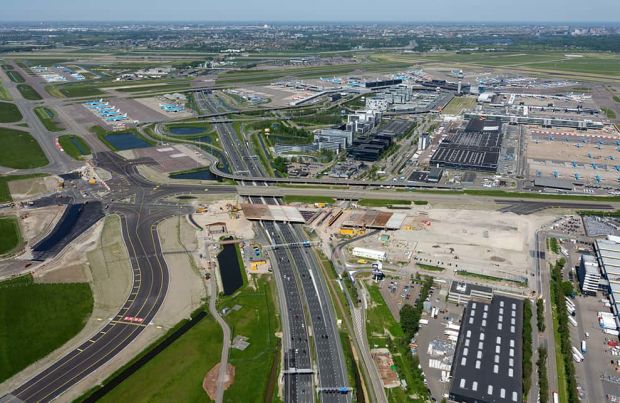: Completing Schiphol’s dual taxiway system
The Schiphol terminal is surrounded by taxiways that handle the flow of departing and arriving aircraft. Almost all of these taxiways have two lanes. The ring they form, however, is not complete. Between the Kaagbaan Runway and Zwanenburgbaan Runway, planes must make do with a single lane taxiway: Quebec. We are going to make this a dual taxiway – a project that involves building a second aircraft bridge over the A4 motorway.
By completing the dual taxiway system, we are dealing with two issues simultaneously. It will create a more manageable situation for air traffic control and aircraft will no longer have to wait in line. We are therefore enhancing safety and improving our service.
Completing the circle for an even safer future of Schiphol
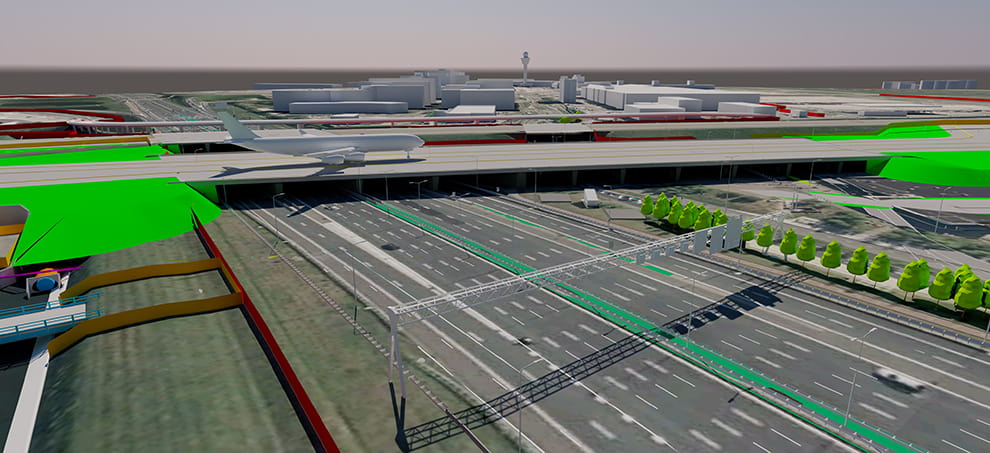
Facts & figures
Constructing a second aircraft bridge over one of the busiest motorways in the Netherlands, connecting these two new sections of taxiway to the existing taxiways, relocating a 26 meter-high advertising mast, dismantling four buildings and finding new premises for the occupants – turning Quebec into a dual taxiway is a complex operation. And throughout the project we never lose sight of our sustainability targets.
- The new airport bridge measures 250 by 60 metres and has a total surface area of 15,000 square metres. That’s large enough to accommodate two Johan Cruijff arenas.
- 900 pile foundations have been put in place to support the 32 million kilo structure.
- Such a huge construction requires a lot of material. This includes 2.2 million kilos of reinforcement and 352,580 tonnes of sand.
- A great deal of material was needed for the two new sections of taxiway too, including 62,000 tonnes of asphalt and 215,000 cubic metres of sand. These new sections will be lit up by 625 lights and we have laid 150 kilometres of cable.
- The arrival of the new aircraft bridge meant that we replaced one of the motorway portals (from which road signs are hung) with a new 86 metre-long one.
- Sustainability at Schiphol is important to us and this project is no exception. That’s why we saved 52,000 kilometres in transport movements by having a concrete plant on site and we reused 60 percent of the asphalt.
- On the subject of sustainable asphalt: 22,000 square metres of roofing collected after the dismantling of the buildings was turned into 8,800 tonnes of asphalt.
Planning
The aircraft bridge is scheduled to open in December 2021. We are currently preparing the next phase. This will start at the beginning of 2023.
Insiders info
-
A double taxiway around Schiphol Centre
